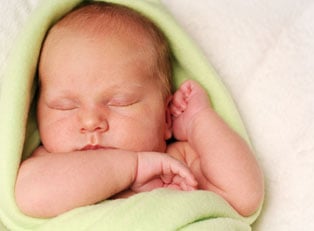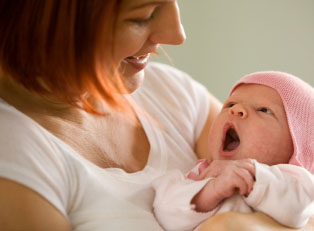Bundling baby up against the elements is a new parent tendency, but it’s largely unnecessary in a comfortable room. Knowing what temperature is appropriate for a newborn can help minimize over- and under-heating. New babies’ bodies don’t regulate their temperature as well as older kids or adults. Here’s a look at the importance of the right indoor climate and how to keep your little one comfortable.
Dangers of High Temperatures
Being too hot or too cold can be dangerous for newborns. In fact, sweltering indoor conditions can actually increase the risk of SIDS (sudden infant death syndrome). Because infants have a more difficult time regulating body temperatures, their bodies don’t physiologically cool down or warm up the way adults do, and what they can do just isn’t as efficient. Higher temperatures can also lead to crankiness and restless sleep. Newborns can suffer from heat exhaustion or heat stroke more easily than adults or children.
Likewise, colder temperatures also cause problems. Newborns can’t warm up as easily as older kids, so their little bodies use more calories than normal trying to warm up, which can be a problem when all those calories are supposed to be making nice, chubby little thighs. Being cold may also cause abnormal fussiness and poor sleeping, which in turn can make Baby more liable to certain complications. Dangerously cold babies tend to be lethargic and less reactive than normal.
Expert Recommendations
Just like adults, the perfect temperature is likely to vary from baby to baby, and a lot of factors can also impact that number in individual babies. These factors may include:
- Baby’s current stress level,
- Stimulation in a given environment,
- Child's proximity to her parents,
- Time of day,
- Overall health of the baby, and
- Proximity of the heat or cooling source.
However, the majority of medical experts recommend your home and rooms should be kept at a temperature that feels comfortable -- between 68 and 72 degrees Fahrenheit is generally appropriate for most seasons. Premature infants may tend towards the higher end of those numbers for the first few weeks, as they take longer than normal to adjust to internal temperature regulation.
A good general rule of thumb is if you are too cold or too hot, your baby is probably too cold or too hot. If you are dressed lightly (not in fleece pants and a sweater), are you comfortable? Then Baby probably feels the same way.
Keeping Baby Comfortable
Rather than stuffing baby in a billion layers in the winter, consider what you’re wearing and add one more layer (generally not a heavy one) at bedtime or before going outside into the elements. In summer, stick to about the same amount of clothes as you would wear and include an extra bedtime layer.
Rather than adding heaters or AC units to the nursery, use a fan to circulate air. Fans may also help minimize the risk of SIDS. If you are concerned about your little one’s comfort, check his belly or the back of the neck. If it’s freezing or sweaty, adjust accordingly. A normal temperature for an infant is between 97 and 100.3 degrees Fahrenheit. Check with your pediatrician if you are concerned about your baby’s body temperature.



